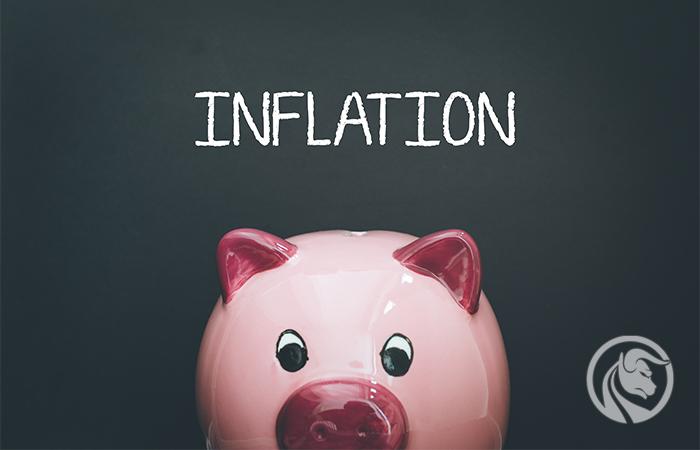The path to inflation after the pandemic
There is a general consensus among economists that the initial shock from Covid-19 is an important disinflationary impulse. However, there is no consensus on the further development of events in, say, the next two to three years.
Some argue that a significant increase in money supply will continue to contribute to the development of speculative bubbles in the real estate and equity markets, as it did in the post-global financial crisis, but that this will have little impact on the real economy as such, with due to the steady decline in both the money multiplier (the amount of money generated by banks using one dollar of reserves) and the speed of money movement (the rate of change of money in the economy).
About the Author
 Christopher Dembik - French economist of Polish origin. Is a global head of macroeconomic research at a Danish investment bank Saxo Bank (a subsidiary of the Chinese company Geely serving 860 HNW customers around the world). He is also an advisor to French parliamentarians and a member of the Polish think tank CASE, which took first place in the economic think tank in Central and Eastern Europe according to a report Global Go to Think Tank Index. As a global head of macroeconomic research, he supports branches, providing analysis of global monetary policy and macroeconomic developments to institutional and HNW clients in Europe and MENA. He is a regular commentator in international media (CNBC, Reuters, FT, BFM TV, France 2, etc.) and a speaker at international events (COP22, MENA Investment Congress, Paris Global Conference, etc.).
Christopher Dembik - French economist of Polish origin. Is a global head of macroeconomic research at a Danish investment bank Saxo Bank (a subsidiary of the Chinese company Geely serving 860 HNW customers around the world). He is also an advisor to French parliamentarians and a member of the Polish think tank CASE, which took first place in the economic think tank in Central and Eastern Europe according to a report Global Go to Think Tank Index. As a global head of macroeconomic research, he supports branches, providing analysis of global monetary policy and macroeconomic developments to institutional and HNW clients in Europe and MENA. He is a regular commentator in international media (CNBC, Reuters, FT, BFM TV, France 2, etc.) and a speaker at international events (COP22, MENA Investment Congress, Paris Global Conference, etc.).
Others fear that in the long run, a money-supply boom, combined with a change in the inflationary regime characterized by increased protectionism and the wider implementation of redistributive policies to counteract inequality, will create sustained inflationary pressures and permanently push inflation above the 2% threshold. This view is supported by the fact that in the past inflation has always reacted to unexpected changes in the inflation regime.

According to most economists, the M2 aggregate is the most important leading indicator for inflation. It can be said with certainty that in the past, even during the stagflation in the 70s, the growth of the money supply has never been as high as it is now, during the pandemic, exceeding 20% y / y.
It's not over yet
The recent surprisingly high readings of inflation data, such as the US CPI in July and unit labor costs in the US in Q12,2, are not related to the projected change in the inflationary regime. Admittedly, this increase mainly reflects data distortions due to strict isolation and subsequent recession. If we go into detail, we find that the strong CPI reading is due to relative movements in certain markets, not an overall price increase. Relating to the XNUMX% increase in unit labor costs in QXNUMX, it essentially illustrates job losses in the group of the lowest paid employees, which leads to a distortion of the measurement. At least for a while we will have to get used to the inflation buzz and refrain from drawing premature conclusions about changes in the inflationary regime.
Everything is relative
In an interesting interview with MACROVoices (see. here), Vincent Deluard, macroeconomic strategy specialist at StoneX Group Inc., proposes a different approach to the problem of inflation. It rightly argues that inflation has not disappeared from the real economy in recent years - it is still there, but the CPI is not able to catch it, because it measures the average level of inflation in the economy. In fact, focusing on the CPI ignores the problem of intergenerational inequality:
“The severely moderate inflation over the past twenty years has been the product of two balancing forces. On the one hand, there has been an explosion in the cost of health insurance premiums, college tuition fees, rents in key urban areas, and childcare costs. On the other hand, the cost of most things that can be purchased at Walmart (and which are essentially manufactured overseas) has dropped sharply.
This led to two very different experiences of inflation: retired representatives of the post-war baby boom generation (the so-called boomers), who most often have their own homes, live in small towns and suburbs, shop in hypermarkets, with health care covered by the Medicare system, feel deflation (...). On the other hand, new job offers for younger generations appear almost exclusively in large agglomerations where the cost of living has jumped upwards.".
Deluard draws two basic conclusions from this:
- There is intergenerational inequality in society.
- The level of inflation largely depends on belonging to a given age group.
In other words, the younger generations (Millennials and Generation Z) who contribute the most to the community in terms of productivity are more costly than others, and at the same time do not have access to the capital to buy property and a fair standard of living.
By sacrificing the young and the poor to save the old and the rich, the Covid-19 crisis has highlighted the intergenerational inequalities and the reasons for millennials' resentment against boomers. One way to solve this problem is political interference, implementing redistributive policies and other incentive programs, for example in the form of an unconditional basic income or the so-called helicopter money. Now that governments and the US Congress have become key actors in the growth of the money supply, there is a high probability that they will not give up this new power too soon.
Inflation is always and everywhere a political phenomenon. Its evolution largely depends on the future political decisions that will be made after the crisis. In our view, redistributive policies and other stimulus programs will play a pivotal role in creating a favorable environment for an inflationary episode after the recovery begins in, say, 12-18 months.
If we combine redistribution policies with the new trend of relocation of supply chains and the rise of protectionism, we have an almost perfect narrative for 2022 and beyond that could (temporarily) contain deflationary forces driven by demographic and technological changes.






















![Forex Club – Tax 9 – Settle tax on a foreign broker [Download the Application] Forex Club - Tax 9](https://forexclub.pl/wp-content/uploads/2024/02/Forex-Club-Podatek-9-184x120.jpg?v=1709046278)
![Trading View platform – solutions tailored to the needs of traders [Review] trading view review](https://forexclub.pl/wp-content/uploads/2024/03/trading-view-recenzja-184x120.jpg?v=1709558918)
![How to connect your FP Markets account to the Trading View platform [Guide] fp markets trading view](https://forexclub.pl/wp-content/uploads/2024/02/fp-markets-trading-view-184x120.jpg?v=1708677291)
![How to invest in ChatGPT and AI? Stocks and ETFs [Guide] how to invest in chatgpt and artificial intelligence](https://forexclub.pl/wp-content/uploads/2023/02/jak-inwestowac-w-chatgpt-i-sztuczna-inteligencje-184x120.jpg?v=1676364263)




![Izabela Górecka – “Success on the market depends not only on knowledge, but also on emotional stability” [Interview] Izabela Górecka - interview](https://forexclub.pl/wp-content/uploads/2024/04/Izabela-Gorecka-wywiad-184x120.jpg?v=1713870578)
![WeWork – the anatomy of the collapse of a company valued at $47 billion [WeWork, part II] wework bankruptcy story](https://forexclub.pl/wp-content/uploads/2024/04/wework-bankructwo-historia-184x120.jpg?v=1711729561)
![Adam Neumann – the man who screwed up Softbank [WeWork, part AND] adam neumann wework](https://forexclub.pl/wp-content/uploads/2024/04/adam-neumann-wework-184x120.jpg?v=1711728724)




![The most common mistakes of a beginner trader - Mr Yogi [VIDEO] Scalping - The most common mistakes of a beginner trader - VIDEO](https://forexclub.pl/wp-content/uploads/2024/03/Scalping-Najczestsze-bledy-poczatkujacego-tradera-VIDEO-184x120.jpg?v=1711601376)
![Learning patience: No position is also a position - Mr Yogi [VIDEO] Scalping - Learning patience - No position is also a position - VIDEO](https://forexclub.pl/wp-content/uploads/2024/03/Scalping-Nauka-cierpliwosci-Brak-pozycji-to-tez-pozycja-VIDEO-184x120.jpg?v=1710999249)
![When to exit a position and how to minimize losses - Mr Yogi [VIDEO] Scalping - When to exit a position and how to minimize losses - VIDEO](https://forexclub.pl/wp-content/uploads/2024/03/Scalping-Kiedy-wyjsc-z-pozycji-i-jak-minimalizowac-straty-VIDEO-184x120.jpg?v=1710336731)


















Leave a Response